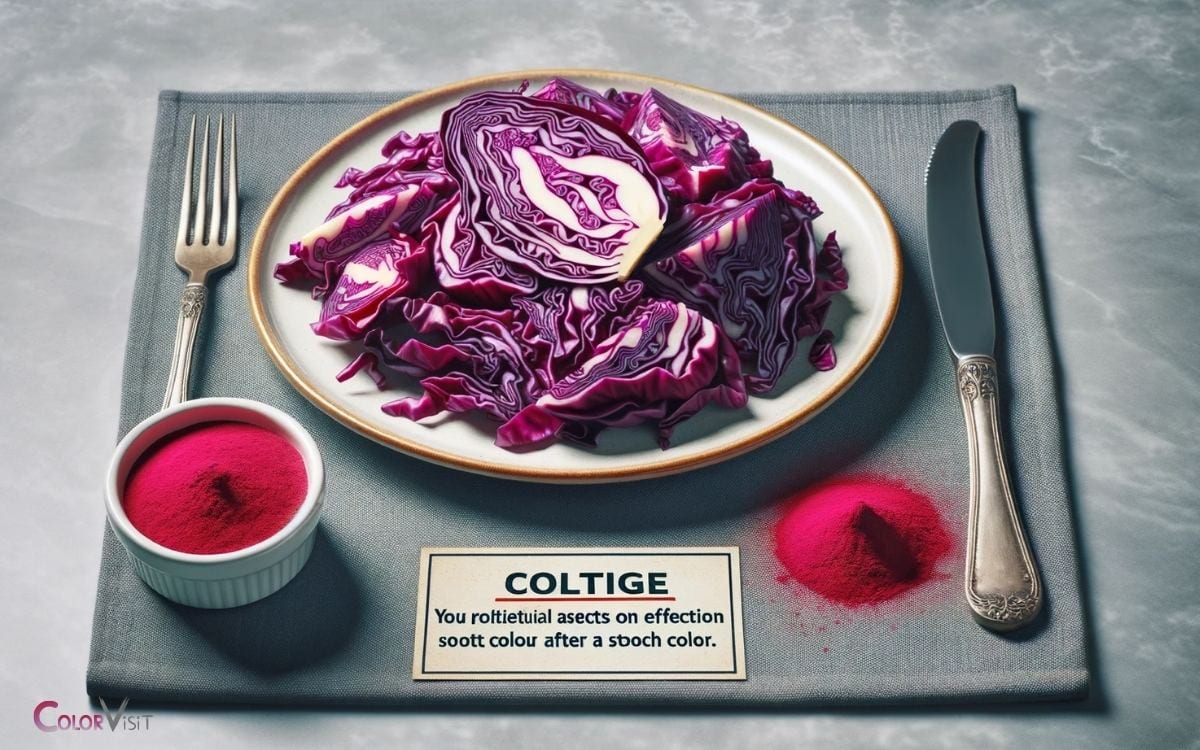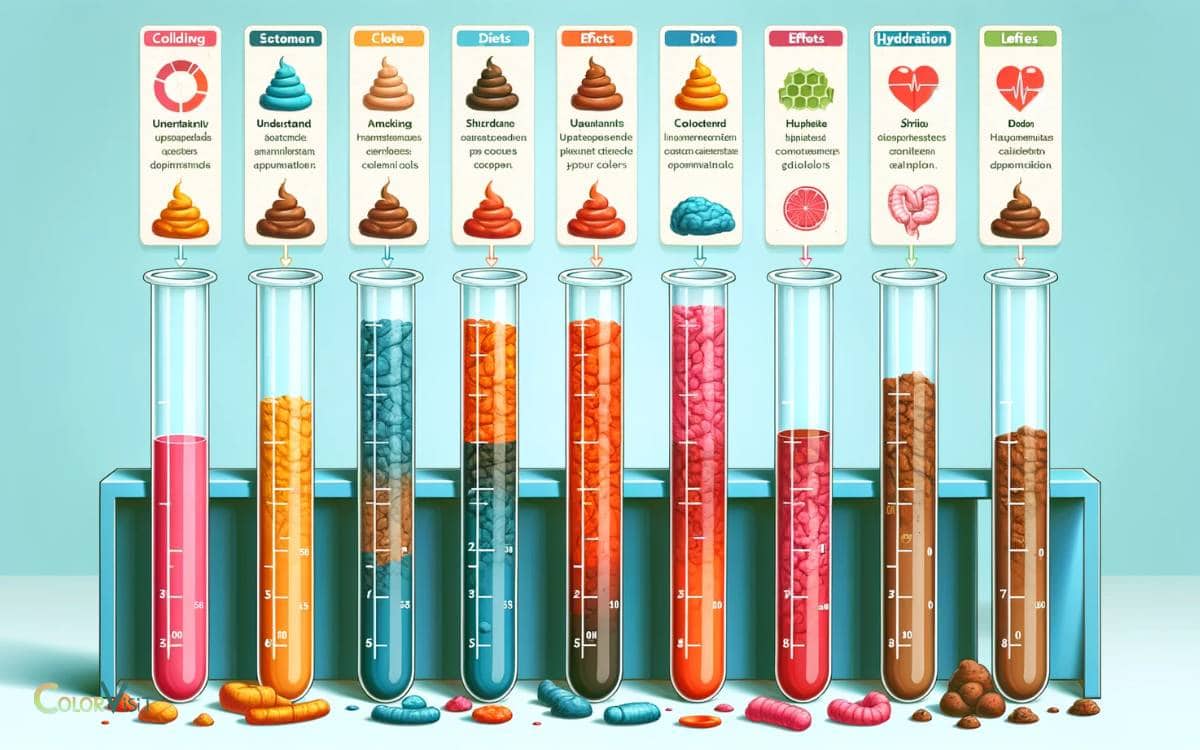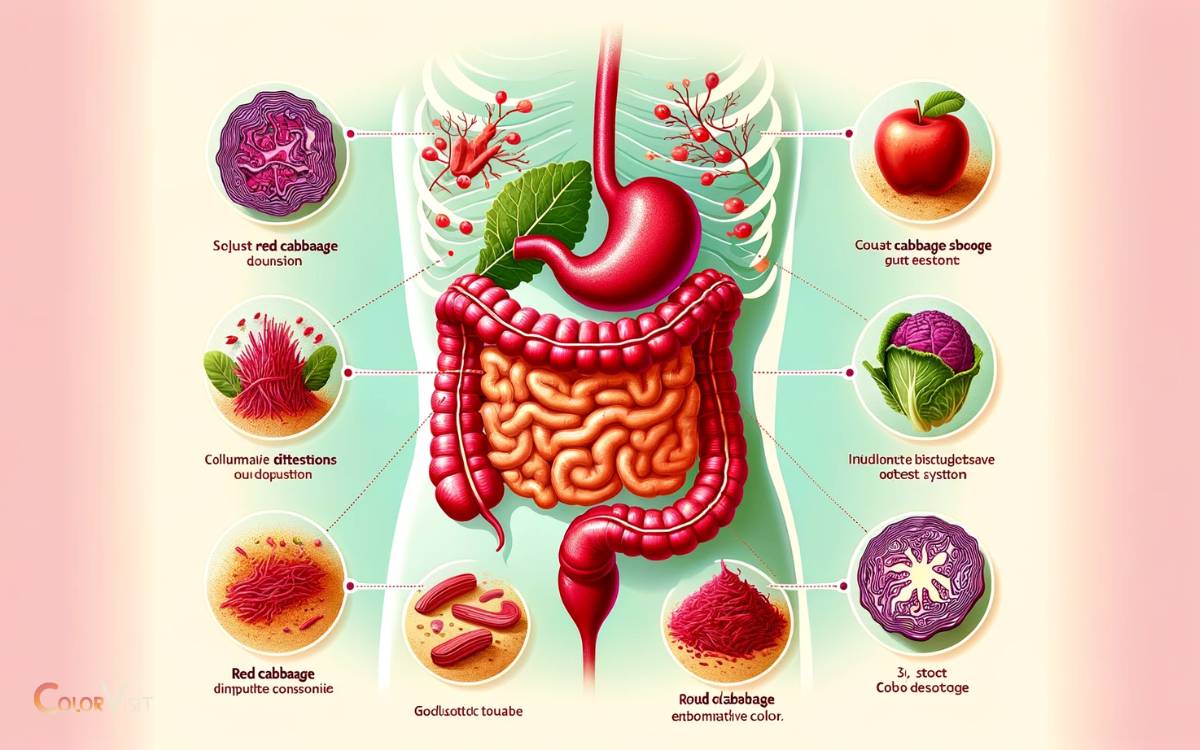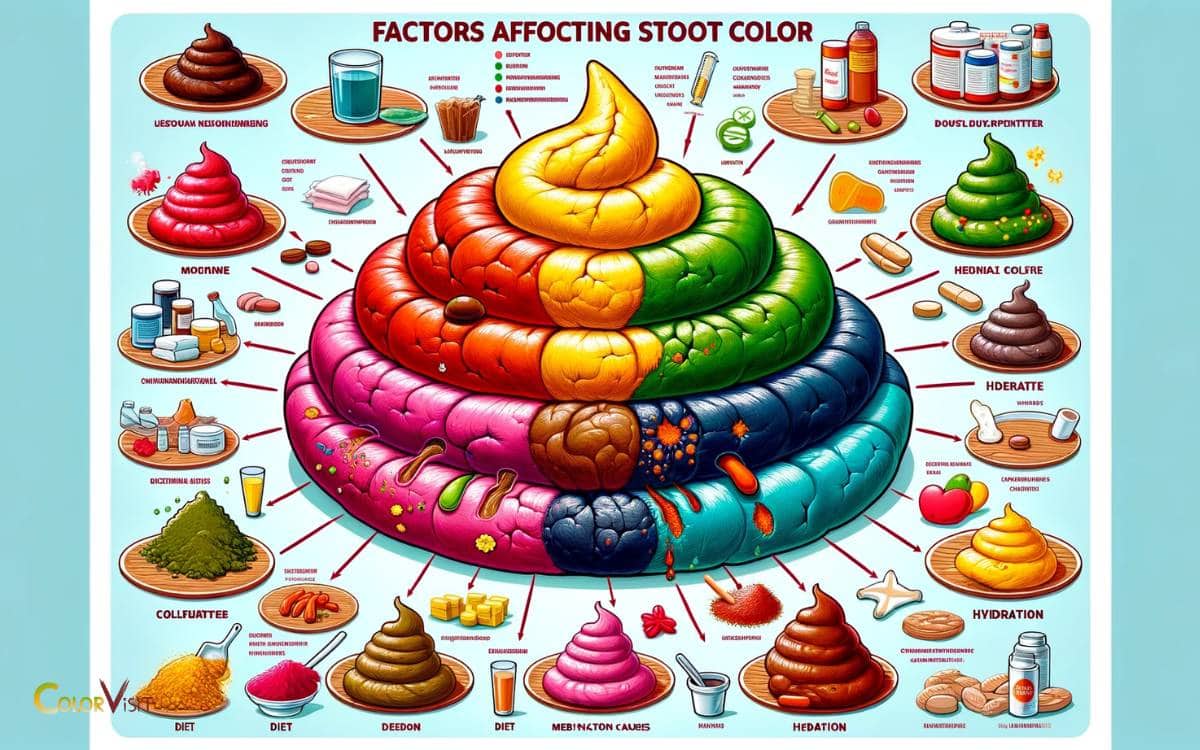Does Red Cabbage Change Stool Color? Yes!
Yes, red cabbage can change the color of your stool. Anthocyanins are natural pigments found in red cabbage which can paint your stool a reddish or purplish hue.
However, this change is temporary and should not be a cause for concern. For instance, if you eat a bowl of red cabbage salad, you might notice a color change in your stool the next day.
While the color change might seem alarming, it’s a harmless effect of consuming red cabbage. Always remember, your diet significantly influences your stool color.
Key Takeaway
Understanding Stool Color
Understanding stool color is important for assessing digestive health and identifying potential underlying medical conditions.
- Stool color is influenced by various factors including diet, medications, and the presence of certain medical conditions.
- Normal stool color ranges from brown to varying shades of green. However, abnormal stool colors such as red, black, or pale grey may indicate issues such as bleeding in the gastrointestinal tract, liver problems, or biliary conditions.
- Monitoring stool color can provide valuable insights into an individual’s digestive health and overall well-being.
Understanding the relationship between diet and stool color is crucial for comprehensive health assessment.
Nutritional Content of Red Cabbage
Red cabbage is a highly nutritious vegetable that is rich in essential vitamins, minerals, and antioxidants, which can contribute to overall digestive health and potentially influence stool color.
- This cruciferous vegetable is an excellent source of vitamin C, vitamin K, vitamin A, and various B vitamins. It also contains essential minerals such as manganese, potassium, and magnesium.
- Red cabbage is known for its high antioxidant content, including flavonoids and polyphenols, which have been linked to numerous health benefits, including anti-inflammatory and anti-cancer effects.
- Additionally, red cabbage is a good source of dietary fiber, which supports digestive health and regularity.
Its nutritional profile makes it a valuable addition to a balanced diet, promoting overall well-being and potentially impacting stool color due to its rich pigmentation and fiber content.
Impact of Red Cabbage on Digestive System
The consumption of red cabbage can impact the digestive system in various ways, influencing both nutrient absorption and bowel function.
- Red cabbage is rich in fiber, which promotes healthy digestion by aiding in the passage of food through the digestive tract and preventing constipation.
- Additionally, red cabbage contains compounds such as glucosinolates and anthocyanins, which have been associated with anti-inflammatory and gut-protective effects.
- These compounds may contribute to a healthy gut environment, supporting the growth of beneficial gut bacteria and reducing the risk of gastrointestinal disorders.
- Furthermore, the high vitamin C content in red cabbage supports the body’s ability to absorb iron from plant-based sources, enhancing overall nutrient absorption.
- Understanding how red cabbage affects the digestive system is essential in comprehending its potential impact on stool color.
Having explored the impact of red cabbage on the digestive system, it is now pertinent to delve into the factors that affect stool color.
Factors Affecting Stool Color
Several factors can influence stool color. Diet, medication, and underlying health conditions are the main contributors.
- Diet plays a significant role, with foods like beets, red cabbage, and artificial food coloring potentially causing color changes.
- Iron supplements and certain medications like bismuth subsalicylate can also darken stool color.
- On the other hand, antacids containing aluminum hydroxide can cause stools to appear whitish.
- Medical conditions such as liver or gallbladder disorders can lead to changes in stool color.
- This often causes it to become pale or clay-colored. Bleeding in the gastrointestinal tract can result in black, tarry stools.
It’s important to note that temporary changes in stool color due to diet or medication are usually harmless.
However, persistent or unexplained changes should be discussed with a healthcare professional for further evaluation.
Other Foods That Can Change Stool Color
One common food that can alter stool color is beets, known for producing a reddish tint in the stool.
Additionally, certain foods can cause stool color changes due to the pigments they contain.
Here is a table illustrating the impact of various foods on stool color:
| Food | Stool Color Change | Pigment Responsible |
|---|---|---|
| Beets | Reddish tint | Betanin |
| Spinach | Green | Chlorophyll |
| Blueberries | Blue or blackish | Anthocyanins |
| Carrots | Orange | Beta-carotene |
These foods contain pigments that are not fully digested, leading to their presence in the stool and resulting in color changes.
Understanding the effects of different foods on stool color can help individuals make informed dietary choices and alleviate concerns about stool color variations.
Conclusion
Red cabbage, like many other foods, can impact stool color due to its nutritional content and effect on the digestive system.
Factors such as individual differences and other foods consumed can also influence stool color.
Understanding these factors can provide insight into the body’s digestive processes and overall health.
Awareness of the potential impact of red cabbage and other foods on stool color can aid in interpreting changes in digestive health.






